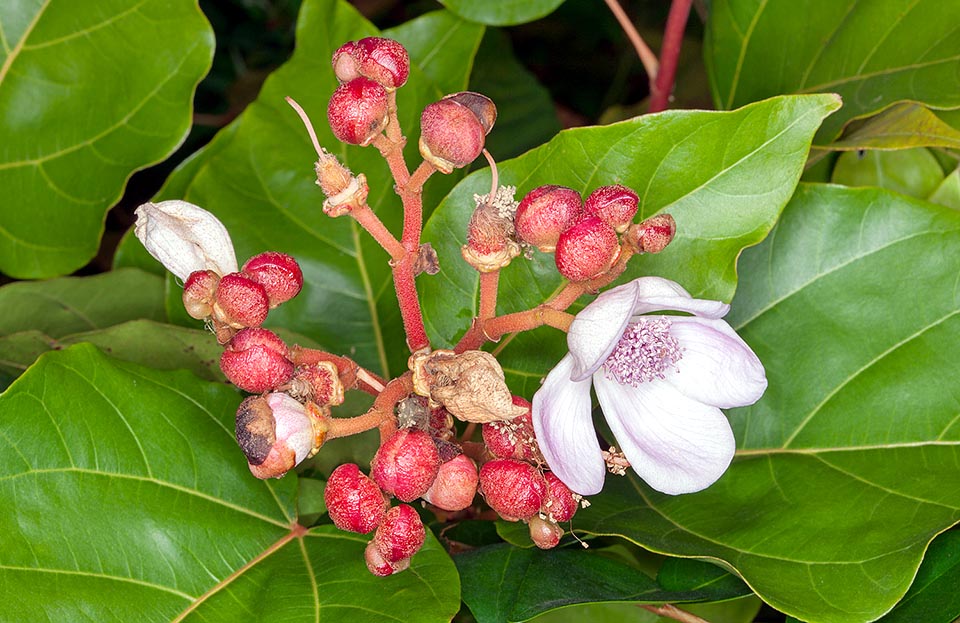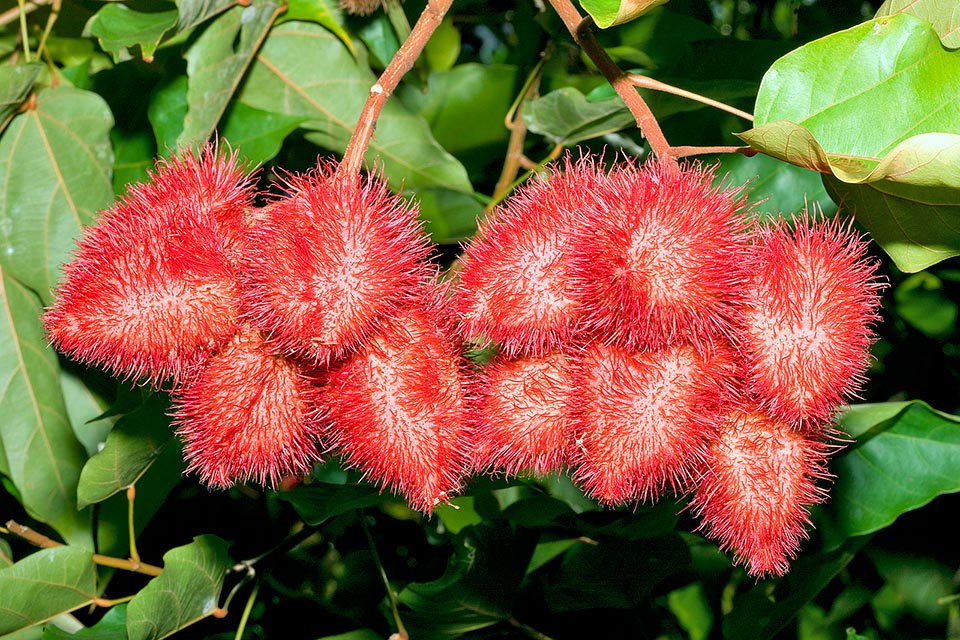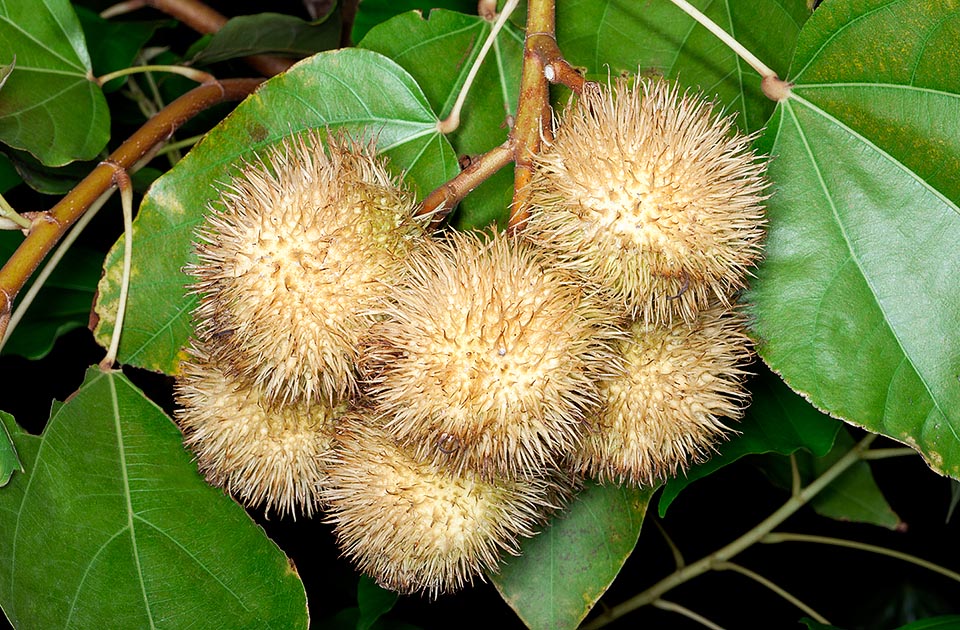Family : Bixaceae

Text © Pietro Puccio

English translation by Mario Beltramini

Bixa orellana is a tropical American shrub or evergreen tree with several white or mauve pink 6 cm flowers © Giuseppe Mazza
The name of the genus comes from the name of the plant in the Caribs language, “bija”; the species is honoured to Francisco de Orellana (1511ca-1546), Spanish conquistador and explorer, who, starting from Quito, crossing the Andes and travelling along the Amazon river, to which he gave the name, reached its estuary.
Common names: “annatto” (Italian); “chiote”, “lipstick tree” (English); “rocou”, “roucou”, “achiote”, “rocouyer” (French); “Annatto”, “Orleanstrauch” (German); “achote”, “annatto”, “achiote”, “onoto” (Spanish); “anato”, “urucù”, “açafroa-do-Brasil”, “urucum” (Portuguese).

Known for its typical bright red spiny fruits, very decorative and a colouring, the annatto, gotten from seeds, used in cosmetics and in food industry © Giuseppe Mazza
Besides being widely cultivated for the production of the colouring, which is amply utilized in the food industry, and for the textiles and the cosmetics, it is appreciated as ornamental plant, because of its luxuriant foliage, the flowers and the showy fruits. It can be cultivated in open air in the tropical, and, marginally, in the subtropical zones, elsewhere, it can be cultivated in pot, in order to be sheltered during the cooler months, as it does not bear temperatures even of a few degrees over the 0°C.

Interesting horticultural form with yellowish fruits. All plant parts are variously utilized by natives in the traditional medicine © Giuseppe Mazza
Synonyms: Orellana orellana (L.) Kuntze (1898); Bixa orleana Noronha (1790); Bixa tinctaria Salisb. (1796); Bixa americana Poir. (1804); Bixa purpurea Sweet (1826); Bixa odorata Ruiz & Pav. ex G.Don (1831); Bixa acuminata Bojer (1837); Orellana americana (Poir.) Kuntze (1891); Orellana americana var. leiocarpa Kuntze (1891); Bixa upatensis Ram.Goyena (1909); Bixa orellana f. leiocarpa (Kuntze) J.F.Macbr. (1941); Bixa orellana var. leiocarpa (Kuntze) Standl. & L.O.Williams (1961); Bixa katangensis Delpierre (1970).
→ To appreciate the biodiversity within the BIXACEAE family please click here.
